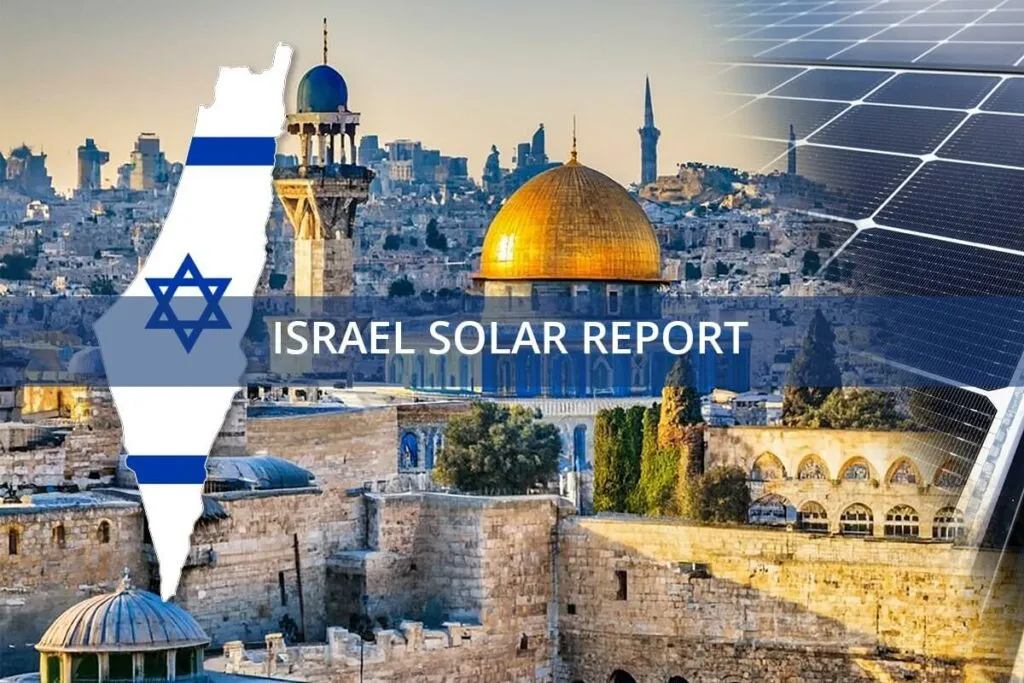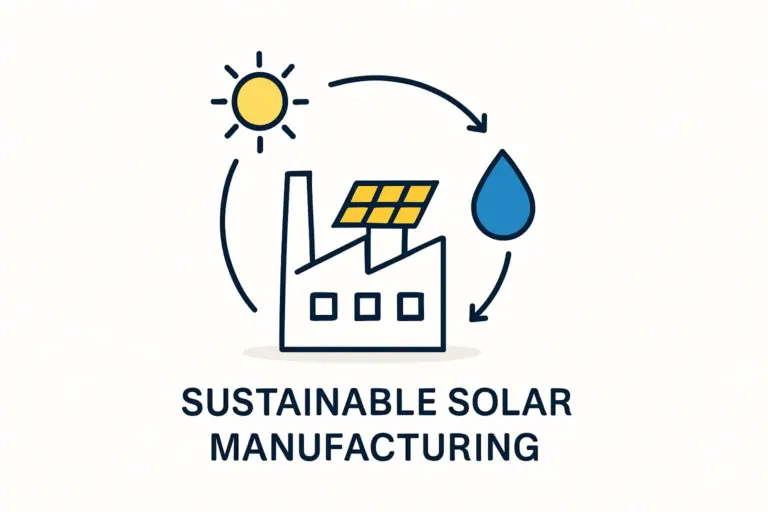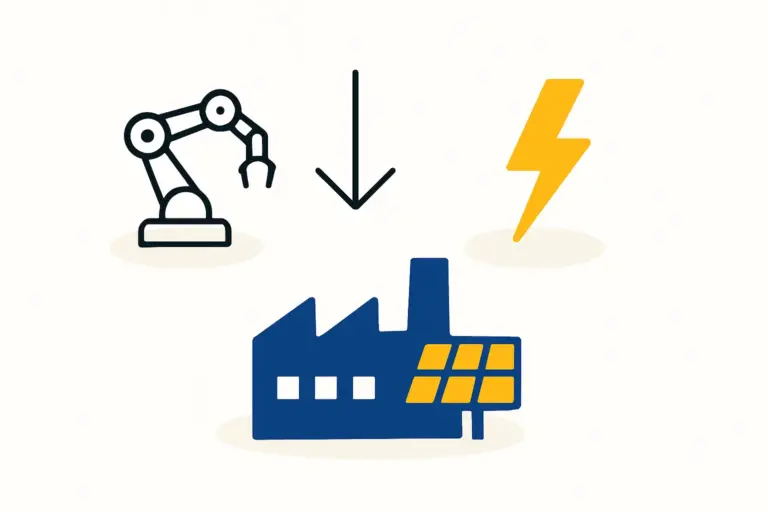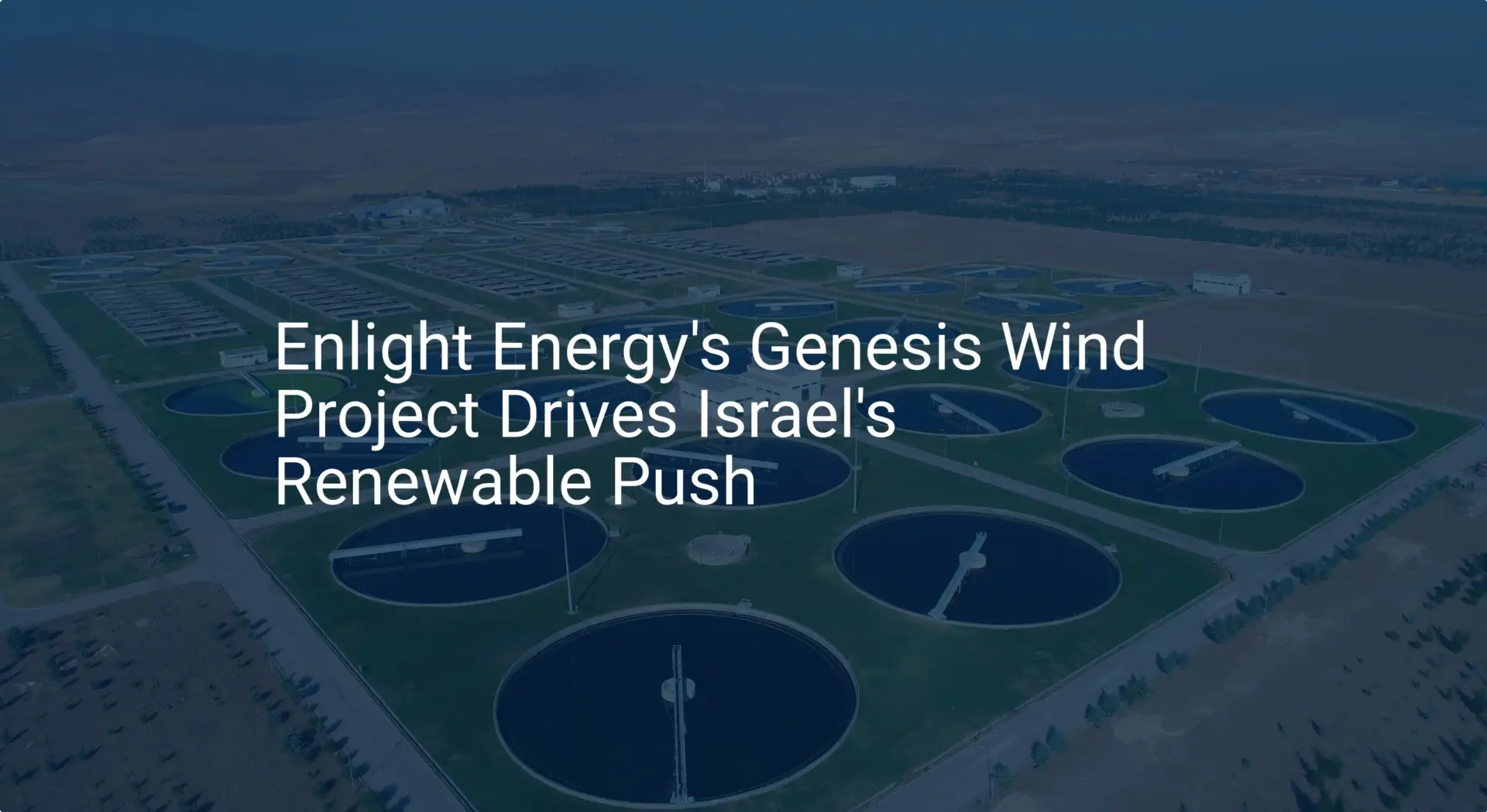Choosing the right location for a new solar module factory is one of the most critical decisions an entrepreneur can make. While production machinery costs may be similar globally, local factors like land prices, government incentives, and logistical infrastructure can dramatically impact a project’s financial viability from day one. In Israel, two distinct regions present a classic business trade-off: the highly developed central region versus the incentive-rich Negev desert.
This analysis compares the key financial and operational factors for establishing a solar factory in either Central Israel or the Negev. It is designed to clarify the variables at play and help business leaders build a robust framework for their site selection process.
Understanding the Core Investment Factors
Before comparing the regions, it’s essential to establish a baseline for the investment. A typical semi-automated turnkey solar production line with a 20–50 MW capacity requires an initial machinery investment of approximately $5–10 million. The physical plant for such an operation generally needs a 3,000–5,000 square meter building on a plot of around 10 dunams (approximately 10,000 square meters or 2.5 acres).
While these figures for machinery and factory size are relatively standard, the costs of land, construction, and ongoing operations vary dramatically by location.
Central Israel: The Path of Proximity
Israel’s central region, encompassing the greater Tel Aviv metropolitan area and its surroundings, is the country’s economic and logistical heart. Locating a factory here offers distinct advantages in infrastructure and human resources.
Land and Infrastructure Costs
The primary financial challenge in Central Israel is the high cost of real estate. A single-dunam plot in an established industrial zone can cost between NIS 1 million and NIS 3 million. For a standard 10-dunam factory plot, this translates to an initial land acquisition cost of NIS 10–30 million. On top of that, municipal taxes, known as Arnona, are significantly higher here, impacting long-term operational expenditures.
Labor and Talent Pool
The region’s key advantage is its dense population and proximity to leading technical universities and institutions. This provides ready access to a large pool of skilled engineers, technicians, and managers needed to run a modern manufacturing facility. Access to this talent pool can reduce recruitment time and costs, ensuring the factory is staffed efficiently with qualified personnel.
Logistics and Market Access
Proximity to the major ports of Ashdod and Haifa is a significant operational benefit, reducing inland transportation costs for both importing raw materials (like solar cells, glass, and aluminum frames) and exporting finished modules. Shorter distances mean lower fuel costs, faster turnaround times, and a more resilient supply chain.
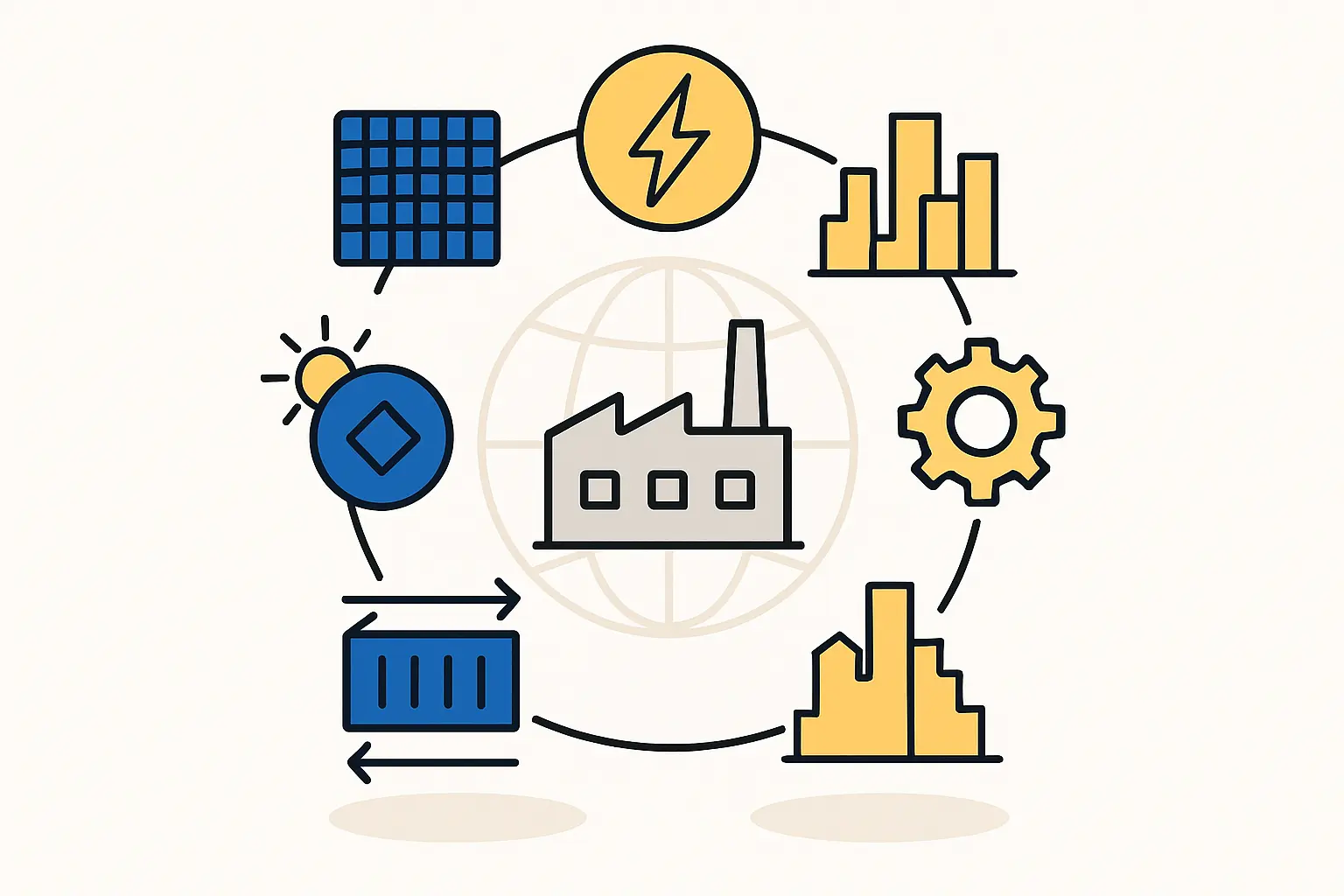
Financial Summary: Central Israel
Advantages:
Ready to make big Profits?
The solar Industry is Booming
WE HELP NEWCOMERS to the solar industry start their own solar module production line. Customers can make BIG PROFITS by selling modules and finding investors, without wasting money and time on things they don't need!
- Excellent access to a skilled labor force.
- Lower logistics costs due to proximity to ports and suppliers.
- Developed infrastructure and business ecosystem.
Disadvantages:
- Extremely high land acquisition costs.
- Higher ongoing operational costs due to municipal taxes (Arnona).
- Lack of significant government capital investment grants.
The Negev: The Incentive-Driven Frontier
The Negev region in southern Israel is a national development priority area. To encourage industrial investment, the government offers a powerful suite of financial incentives that can fundamentally change the economics of setting up a factory.
Government Incentives and Grants
The most compelling reason to consider the Negev is its status as a “Development Area A” under Israel’s Law for the Encouragement of Capital Investments. This designation offers new industrial projects substantial financial support:
- Capital Investment Grant: A grant of up to 30% on the value of fixed assets, including production machinery. For a $5 million machinery investment, this could reduce an investor’s direct capital outlay by $1.5 million.
- R&D Grants: Additional grants are often available for research and development activities.
- Employment Grants: Financial support may be provided for creating new jobs in the region.
Based on experience from J.v.G. turnkey projects, leveraging these grants requires meticulous planning and documentation, but their financial impact is often the deciding factor.
Land and Operational Costs
Land in the Negev costs a fraction of what it does in the center. Industrial plots here typically range from NIS 100,000 to NIS 300,000 per dunam. A 10-dunam plot would therefore cost NIS 1–3 million—a saving of over 90% compared to the central region. Additionally, Arnona rates are considerably lower, leading to sustained operational savings year after year.
Addressing the Challenges: Labor and Logistics
The primary challenges in the Negev are talent acquisition and logistics. Its pool of experienced engineers and technicians is smaller, requiring a more proactive recruitment strategy. This might include offering relocation packages or providing company transport from population centers like Be’er Sheva.
Logistically, the greater distance to the ports of Ashdod and Haifa adds to transportation costs and transit times. This factor must be carefully modeled in the operational cost section of any solar manufacturing business plan.

Financial Summary: The Negev
Advantages:
- Substantial government grants (up to 30%) reducing initial capital expenditure.
- Vastly lower land acquisition costs.
- Reduced ongoing operational costs from lower municipal taxes.
Disadvantages:
- Potential challenges in recruiting specialized technical staff.
- Higher inland logistics costs for imports and exports.
- Less developed surrounding business infrastructure.
A Comparative Framework: Putting the Numbers to Work
To illustrate the financial trade-offs, let’s consider a simplified model for a 50 MW factory on a 10-dunam plot with a $5 million machinery investment.
Cost Factor: Land (10 dunams)
Central Israel (Estimate): NIS 15,000,000
Negev Region (Estimate): NIS 2,000,000
Financial Impact: ~NIS 13M upfront savings in the Negev.
Cost Factor: Machinery Grant (30%)
Central Israel (Estimate): NIS 0
Negev Region (Estimate): ~$1.5M (NIS 5.5M) grant
Financial Impact: Significant reduction in capital required.
Cost Factor: Annual Logistics
Central Israel (Estimate): Lower
Negev Region (Estimate): Higher by 20-30%
Financial Impact: An ongoing operational cost difference.
Cost Factor: Access to Skilled Labor
Central Israel (Estimate): High
Negev Region (Estimate): Moderate
Financial Impact: A strategic HR challenge to manage.
Cost Factor: Annual Municipal Tax
Central Israel (Estimate): Higher
Negev Region (Estimate): Lower
Financial Impact: A consistent operational saving in the Negev.
This comparison highlights the central trade-off: The Negev offers a dramatically lower barrier to entry in terms of capital expenditure, while Central Israel provides lower operational friction in logistics and labor.
Strategic Considerations Beyond Cost
The final decision should align with a company’s long-term strategy. If the primary market is export-focused, the higher logistics costs from the Negev must be sustainable. If, however, the business plan involves serving large-scale solar fields—many of which are planned for the Negev—a local presence could become a strategic advantage.
A comprehensive feasibility study is crucial. It should model different scenarios for transport costs, labor subsidies, and potential supply chain benefits. The pvknowhow.com structured e-course provides frameworks to help investors conduct this type of detailed analysis, ensuring the final decision is based on data, not just assumptions.

Frequently Asked Questions (FAQ)
What is a ‘dunam’ in standard measurement?
A dunam is a unit of land area used in the region, equal to 1,000 square meters, or approximately 0.247 acres. A 10-dunam plot is 10,000 square meters or about 2.5 acres.
What is ‘Arnona’?
Arnona is a municipal property tax levied on residents and businesses in Israel. The rates are set by the local municipality and can be a significant recurring expense for an industrial facility.
How difficult is it to secure government grants in the Negev?
The process is well-defined but requires professional preparation. Applicants must submit a detailed business plan and financial projections that meet the criteria of the Israel Investment Promotion Agency. Working with consultants experienced in this process can greatly improve the likelihood of success.
Does the factory’s location affect solar panel certification?
The location itself does not affect the outcome of solar panel certification, which is based on product quality and manufacturing process standards (like ISO and IEC). However, a location in Central Israel may offer easier access to testing laboratories and certification bodies.
Conclusion: Making an Informed Decision
The choice between establishing a solar factory in the Negev or Central Israel is not a simple question of ‘cheap’ versus ‘expensive’—it is a strategic trade-off. The Negev presents an opportunity to significantly de-risk a project financially through grants and lower land costs. Success there, however, hinges on building a robust plan to manage the logistical and human resource challenges.
Central Israel offers a more conventional path with fewer operational hurdles but requires a much larger initial capital investment. Ultimately, the optimal choice depends on an investor’s financial structure, risk appetite, and long-term business objectives. A carefully constructed business case that models all variables is the only reliable way to determine which location will provide the strongest foundation for a successful and profitable solar manufacturing enterprise.

